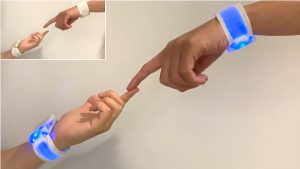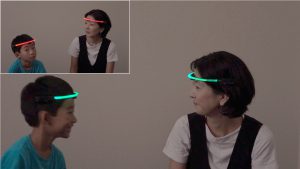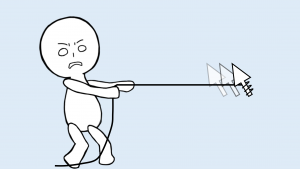EnhancedTouch
EnhancedTouch is a bracelet-type wearable device for facilitating human-human physical touch. In particular, we aim to support children with autism spectrum disorder (ASD), who often exhibit particular communication patterns, such as a lack of physical touch. EnhancedTouch is a unique device that … [READ MORE]
FaceLooks
FaceLooks is a headband-type wearable device used for measuring the time of the face-to-face state with the identity of the partner, using an infrared emitter and receiver. It can also be used for behavioral healthcare applications, such as for children with developmental disorders who exhibit difficulties with the behavior, … [READ MORE]
Can Facial Expressions Induce Haptic Perception?
A key challenge in haptics is designing human–human communications involving touch to facilitate positive effects on social interactions. An important consideration in designing social touch is understanding the effect of social stimuli on perception, in addition to that of a physical stimulus, because … [READ MORE]



